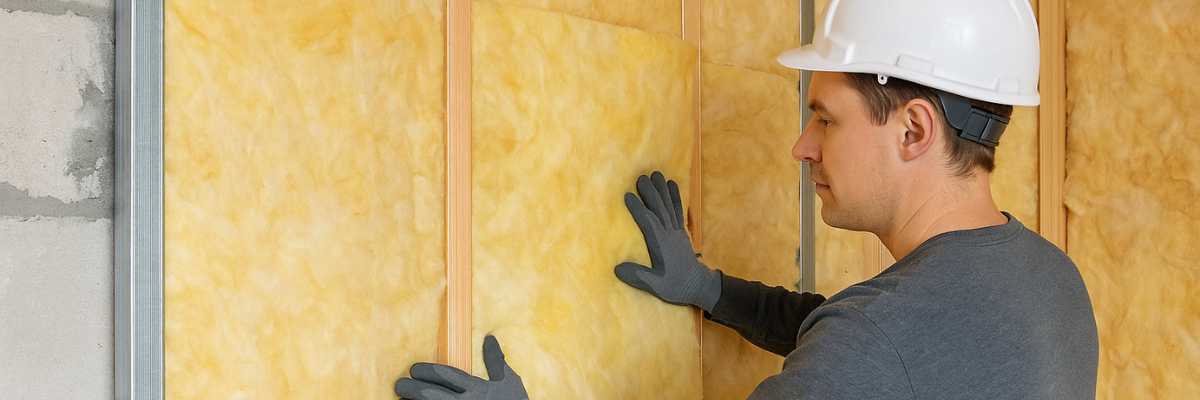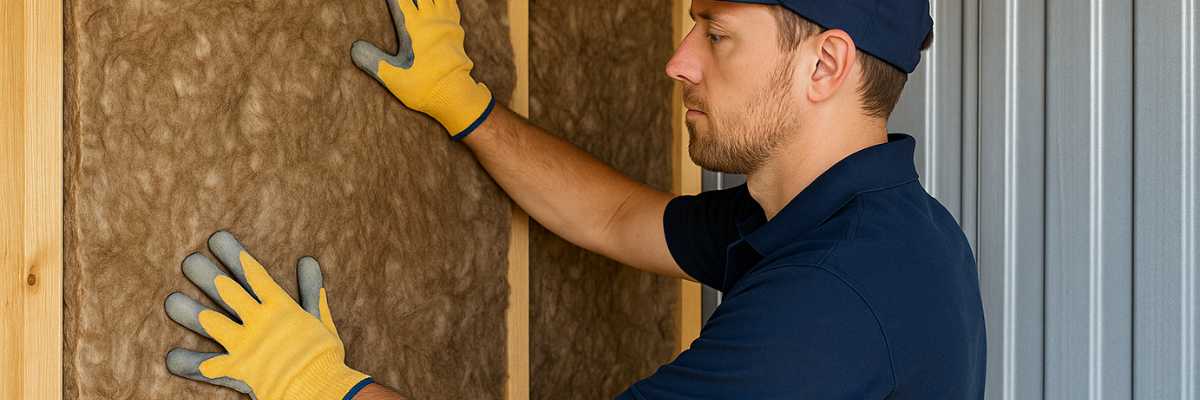Energy efficiency has been important, and if we think about the insulation, it could be the best for older homes. Because older homes may have insufficient insulation. Modern insulation techniques were not used during the construction of many older homes; which resulted in significant energy loss and increased power bills. It's a crucial tactic to increase energy efficiency. Retrofitting wall insulation in existing homes is available and you can do it easily with insulation experts. You can benefit from a more comfortable living space, cheaper energy expenses and, a smaller carbon impact by upgrading the insulation in your house. Retrofitting wall insulation is an investment in the future of your house, not just an enhancement.
What Is Retrofit Wall Insulation?
Retrofit wall insulation: It is the process of improving thermal performance by adding insulation to already existing walls.
Existing Homes: It fills up the gaps in existing insulation in homes constructed before the adoption of contemporary insulation standards.
Installation: Using techniques like blown-in or spray foam insulation, carried out without requiring extensive repairs.
Difference from New Construction: Retrofit insulation differs from new construction in that it fits into pre-existing structures. With this, you can increase energy efficiency without even needing to change the aesthetics of the house.
Why It Matters for Older Homes?
Challenges with Insulation
Outdated Materials: Insulation in older homes may be inadequate or outdated.
Gaps and Settling: Over time, existing insulation may have developed gaps or settled, which decreases its efficacy.
Air Leaks: Air leaks around windows, doors, and walls are common in older homes.
Enhancing Thermal Efficiency Is Important
Energy Savings: By consuming less energy, upgraded insulation lowers utility costs.
Increased Comfort: Consistent indoor temperatures are maintained by better insulation, which increases comfort.
Environmental Impact: By using less energy and emitting fewer greenhouse gases, improved insulation reduces carbon footprint.
Benefits of Retrofitting Wall Insulation
Efficiency in Energy
Using retrofitting wall insulation increases a home's capacity to retain heat in the winter & cool air inside during the summer. This will greatly help to increase energy efficiency. This is accomplished by replacing old insulation and sealing gaps; which lessens the demand for heating and cooling systems to operate as hard. Because they use less energy, homeowners benefit from cheaper utility expenses.
Enhanced Comfort
Keeping the temperature inside of a building steady requires proper insulation. Retrofitting insulation improves a home's ability to control interior temperature and reduces drafts and cold spots. This makes the living environment more reliable and cozy no matter what the weather outside is like.
Reduced Noise
An additional benefit of insulation is enhanced soundproofing in a house. It is possible to reduce sound transmission from the outside and between rooms by installing or updating insulation. This is especially helpful in multi-family homes and metropolitan locations where noise reduction improves privacy and general quality of life.
Impact on the Environment
Improved insulation lessens the need for heating and cooling systems, which lowers a home's carbon impact. Because less energy is used, fewer greenhouse gas emissions result, which helps to preserve the environment. Retrofitted insulation promotes sustainable living and aids in the fight against climate change by utilizing energy more wisely.
Types of Insulation Suitable for Retrofitting
Blown-In Insulation
- Essentially, blown-in insulation is a type of insulation that is blown into wall cavities by a machine using recycled paper or fine glass fibres called fibreglass.
- Complete coverage is ensured by efficiently filling in gaps, cavities, and uneven spaces.
- With R-values ranging from R-3.2 to R-3.8 per inch, it offers good thermal performance.
- It is perfect for retrofitting existing homes without causing significant interruptions because it is simple and quick to install.
Insulation Using Spray Foam
- When applied, air sealant expands to fill in cracks, gaps, and uneven areas, forming an airtight seal that stops heat loss and drafts.
- Closed-cell spray foam has an R-value of R-6 to R-7 per inch, offering a high level of heat resistance.
- Because of its water-resistant qualities, it aids in regulating moisture and avoiding the growth of mould.
Stiff Foam Panels
- Perfect for adding insulation to external walls, basement walls, and flat or low-slope roofs.
- Rigid foam panels effectively reduce thermal bridging and give high R-values (R-3.8 to R-6.5 per inch) due to their composition of materials such as polystyrene and polyisocyanurate.
- To improve insulation performance, cut to size and put on external surfaces or between wall studs. Then, caulk the seams.
Insulation using Natural Fibers
- With an R-value of roughly R-3.5 per inch, this material is safe to handle and has good thermal performance. It is made from recycled cotton or denim.
- Wool insulation made of natural materials is good for controlling moisture and temperature. It is comparable in R-value, ranging from R-3.5 to R-4 per inch, and is treated for fire resistance.
- Both solutions are excellent for eco-aware households because they are environmentally benign and biodegradable.
Insulation Batts
- Insulation batts are lengths of fibreglass, mineral wool, or cotton insulation that are precut and meant to fit in between floor joists, attic rafters, and wall studs.
- They are a popular option for do-it-yourself projects because they are simple to handle and install.
- Insulation batts heat performance, you can consider the best. Depending on the material, it can offer good heat resistance with R-values; that normally range from R-3.1 to R-4.3 per inch.
- They can assist in lessening the transfer of noise between rooms.
- They are typically less expensive than other forms of insulation, which makes them a wise option for homes.
- Adaptable to a range of construction structures, available in varying thicknesses and widths.
Steps to Retrofit Wall Insulation
Assessment: Check for holes, inefficiencies, & regions without enough insulation in the walls to assess the quality of the current insulation. You can consider the elements like the home's age and the insulating materials used today.
Choosing the Correct Insulation Material: When choosing insulation, consider things like cost, moisture resistance, and R-value (thermal resistance). Blown-in, spray foam, stiff foam, and natural fibres are typical alternatives.
Preparation: Prepare by removing all equipment and furniture from the walls and setting up any wall cavities for access. To inject material for blown-in insulation, drill tiny holes; for other varieties, make sure there is appropriate wall access.
Installation Procedure: Use the installation techniques recommended by the selected insulation. Rigid panels are cut to size and installed; spray foam swells when applied; and blown-in insulation is injected via perforations.
Sealing Air Leaks & Gaps: To improve insulation performance & stop drafts, seal any air leaks or gaps that remain after installation.
How Much Does Retrofit Wall Insulation Cost?
The cost of insulation supplies and expert installation fees are the initial considerations to consider when retrofitting wall insulation. The average cost is between $2,500 – $3,500 for various choices. Options with blown-in and sprayed foam are often more costly than those using fibreglass or cellulose. However, because better insulation lowers the cost of heating and cooling, there can be significant long-term savings on energy expenses.
Incentives and rebates are another thing that many governments and utilities provide for energy-efficient upgrades and this can help defray the initial cost. Homeowners can make well-informed judgments about insulating their existing homes. They can do this by utilizing these financial incentives & figuring out the possible return on investment through decreased energy consumption.
Retrofit Wall Insulation Challenges and Considerations
Moisture Management: To stop mould formation, which can deteriorate indoor air quality & damage structures, proper insulation must prevent moisture buildup. Using materials resistant to moisture and making sure there is enough airflow are essential.
Building Codes and Regulations: Insulation kinds, installation techniques, and fire safety requirements may be governed by local building codes; which retrofitting must adhere to. Reduced efficacy and legal problems may result from noncompliance.
Professional Installation vs. Do It Yourself: Using specialists guarantees knowledge and compliance with rules, but it is more expensive. Although doing it yourself can save costs, there is a chance that it won't be done correctly. This could result in poor performance and other difficulties including moisture problems.
Conclusion
An intelligent investment that improves comfort, environmental sustainability, and energy efficiency in existing homes is retrofitting wall insulation. Homeowners can dramatically lower energy expenses and create a more comfortable living environment. For this, they need to address the particular issues that come with older homes, such as outdated or inadequate insulation. The initial expenditure is greatly outweighed by the long-term advantages. This will include cheaper utility bills, better indoor air quality, and less carbon impact. Retrofitting insulation; whether by expert installation or a well-informed DIY method, is an essential step toward a more sustainable & energy-efficient home. To enjoy these long-term benefits, think about acting right now or getting FREE Quotes from an insulation expert immediately.







